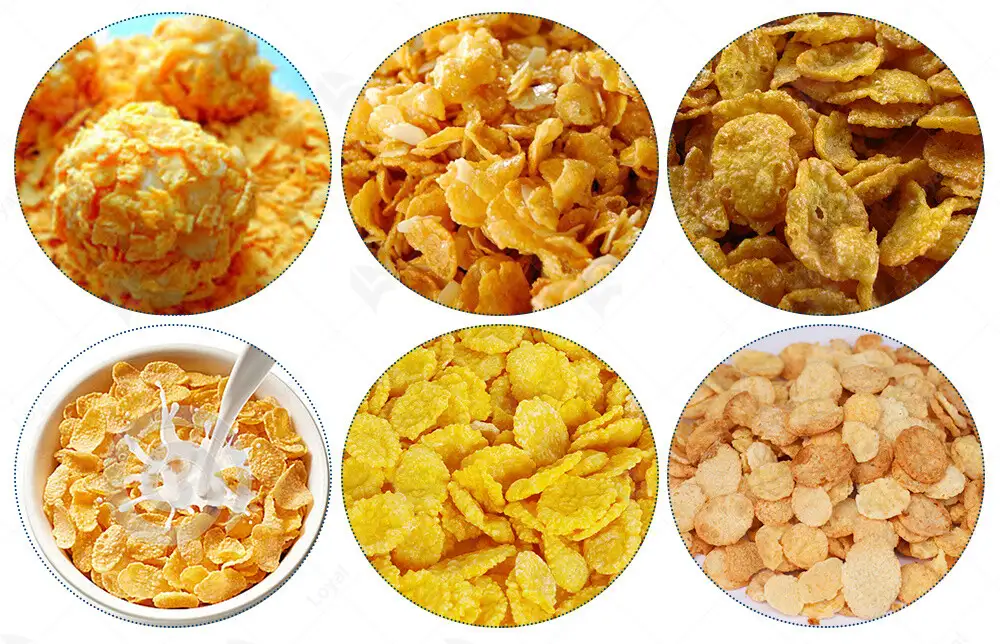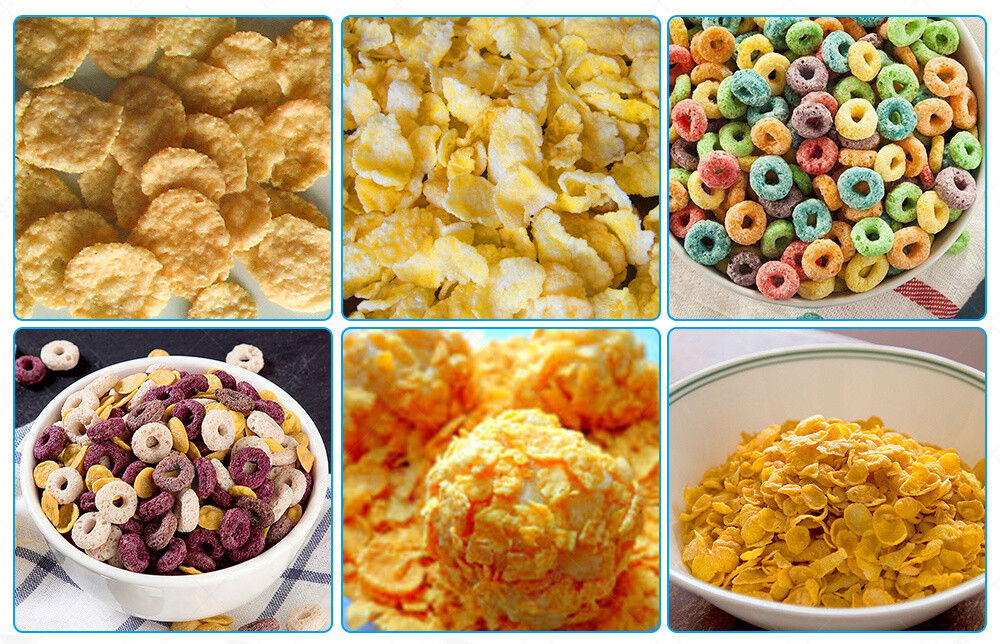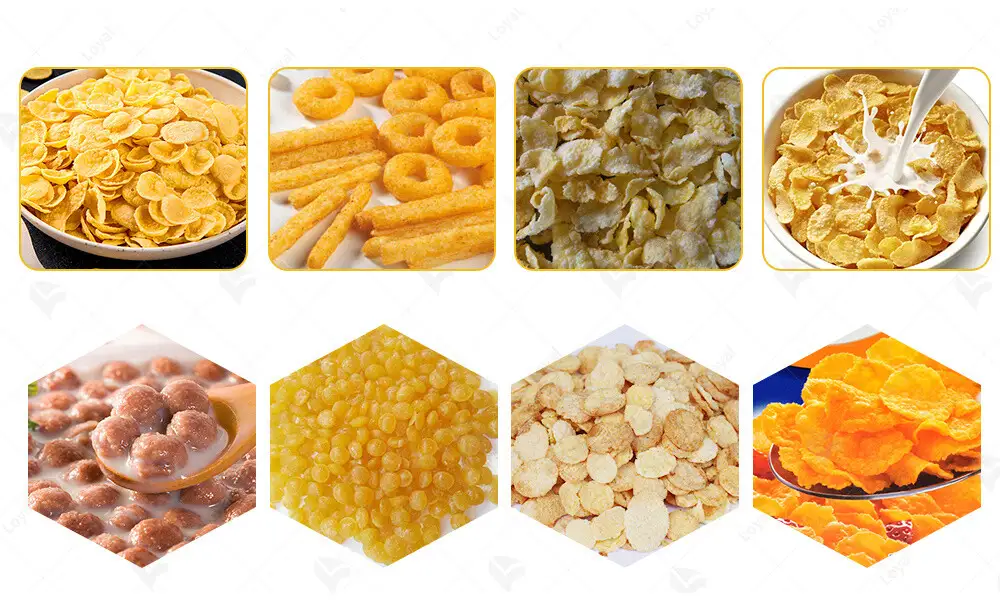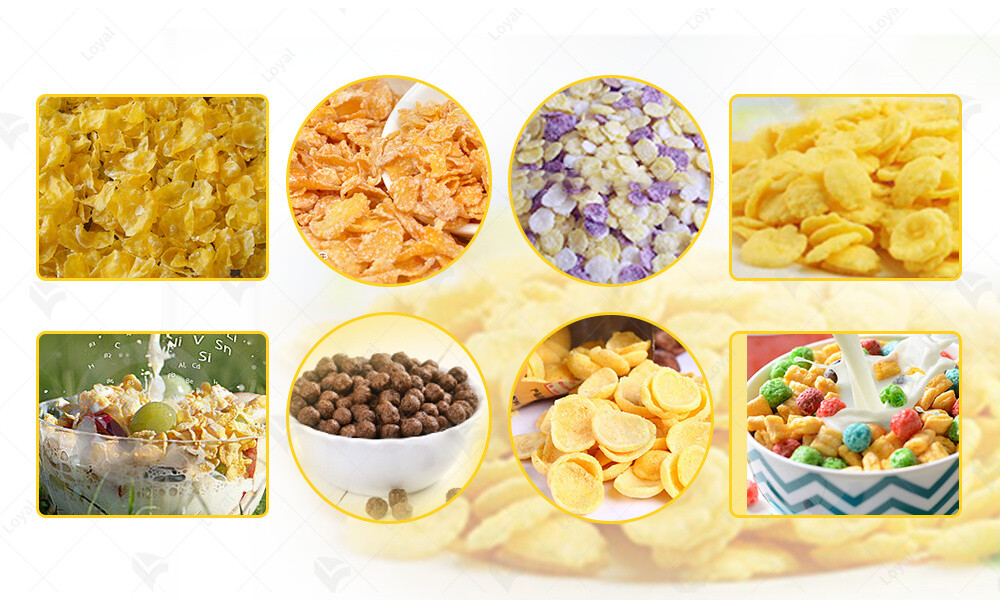The Ultimate Guide to Breakfast Cereal Production Line in 2024
Introduction
In the rapidly evolving world of food production, the breakfast cereal industry stands out as a dynamic and competitive sector. As we step into 2024, the significance of an efficient breakfast cereal production line cannot be overstated. This guide aims to provide a comprehensive overview of the current state of breakfast cereal production, highlighting the critical components and innovations driving this industry forward.
Breakfast cereals are a staple in many households, offering a convenient and nutritious option for millions of people worldwide. The production line for these cereals involves a series of sophisticated processes and machinery designed to ensure consistency, quality, and efficiency. From raw material handling to packaging, each step is meticulously planned and executed.

Components of a Breakfast Cereal Production Line
A breakfast cereal production line is a sophisticated assembly of industrial food machinery designed to efficiently produce various types of breakfast cereals. This line typically includes several key components that work in tandem to transform raw ingredients into finished products.
1. Raw Material Handling System: The process begins with the raw material handling system, where ingredients such as grains, sugars, flavors, and additives are stored and fed into the production line. This system ensures a continuous supply of ingredients to meet production demands.
2. Mixing and Pre-processing Equipment: Once the raw materials are ready, they move to the mixing and pre-processing equipment. This equipment blends the ingredients in precise quantities to achieve the desired formulation for the cereal. It may include mixers, blenders, and conditioners that optimize the consistency and texture of the cereal mixture.
3. Extrusion and Shaping Machinery: The mixed cereal dough undergoes extrusion and shaping processes to form the familiar shapes of breakfast cereals. Extruders play a crucial role in shaping the dough into specific forms, such as flakes, loops, or puffs, through controlled pressure and temperature.
4. Drying and Toasting Units: After shaping, the cereal pieces pass through drying and toasting units. These units remove moisture from the cereal to enhance shelf life and crispiness. Toasting imparts characteristic flavors and colors to the cereal, ensuring consistency in taste and texture.
5. Coating and Flavoring Systems: Once dried and toasted, the cereal pieces may undergo coating and flavoring processes. Coatings such as sugar or chocolate are applied to enhance taste, while flavorings and additives are integrated to enrich nutritional value and sensory appeal.
6. Packaging Machinery: The final step in the production line involves packaging the cereal into consumer-ready formats. Packaging machinery efficiently fills and seals cereal boxes, bags, or containers, ensuring product freshness and quality until it reaches the consumer.
Each component of a breakfast cereal production line is meticulously designed to uphold industry standards for quality, efficiency, and safety. Manufacturers continually innovate these systems to meet evolving consumer preferences and regulatory requirements in the food industry.

Setting Up a Cereal Production Facility
To establish a robust breakfast cereal production line in 2024, meticulous planning and implementation are essential. From selecting the right equipment to optimizing processes, every step plays a crucial role in ensuring efficiency and quality in production.
Key Components of a Cereal Production Line
A modern breakfast cereal production line integrates several key components to streamline operations and enhance output quality. These include:
1. Mixing and Blending: The process begins with precise mixing and blending of ingredients. This stage ensures uniformity in taste and texture, essential for delivering consistent product quality.
2. Extrusion and Shaping: Following mixing, the mixture undergoes extrusion to shape the cereal into desired forms such as flakes, loops, or puffs. This step requires specialized equipment capable of handling various cereal types.
3. Drying and Toasting: Proper drying and toasting are critical to achieving the desired crunchiness and flavor profile. Advanced drying technologies ensure efficient moisture removal without compromising nutritional content.
4. Coating and Flavoring: Coating and flavoring add the final touches to the cereal products. Automated systems apply coatings evenly, while flavoring stations ensure each batch meets taste expectations.
5. Packaging and Quality Control: The final stage involves packaging the cereals into consumer-ready formats. Quality control measures are integrated throughout the production line to maintain standards and minimize waste.
Setting Up the Production Line
When setting up a cereal production line, attention to detail is paramount. Each piece of equipment must be selected based on production volume, product specifications, and regulatory requirements. Collaborating with food machinery experts ensures that the chosen equipment aligns with industry standards and operational goals.
By adhering to best practices in installation and commissioning, manufacturers can minimize downtime and maximize productivity from day one. Regular maintenance schedules and staff training further contribute to operational efficiency and product consistency.
Establishing a breakfast cereal production line demands a strategic approach and investment in cutting-edge food machinery. By focusing on precision, quality, and innovation, manufacturers can meet consumer demands for nutritious and flavorful cereal products in 2024 and beyond.

Production Process Optimization
In 2024, optimizing the production process of breakfast cereal through advanced machinery is crucial for meeting consumer demand and maintaining competitive edge in the market. A well-designed Breakfast Cereal Production Line integrates cutting-edge technology to enhance efficiency and product quality from raw ingredients to final packaging.
1. Automated Ingredient Handling:
Effective production begins with precise handling of raw ingredients. Modern production lines employ automated systems that accurately measure and mix ingredients according to predefined recipes. This ensures consistency in taste and nutritional content across batches.
2. Cooking and Extrusion Technology:
Cooking and extrusion are pivotal stages in cereal production. Advanced extruders utilize controlled heat and pressure to cook cereal doughs into desired shapes and textures. This process is critical for achieving the crispy or chewy texture that consumers expect.
3. Drying and Toasting Efficiency:
After shaping, cereals undergo drying and toasting processes to enhance flavor and shelf life. Optimized machinery controls moisture levels and ensures even toasting, resulting in uniform product quality and reduced energy consumption.
4. Packaging Precision:
Efficient packaging is essential for preserving cereal freshness and appeal. Automated packaging systems not only ensure precise filling and sealing but also incorporate features that enhance product visibility and consumer convenience.
By optimizing each stage of the production process with state-of-the-art machinery, manufacturers can streamline operations, reduce waste, and deliver breakfast cereals that meet high standards of quality and taste.

Technological Innovations in Cereal Production
In 2024, the breakfast cereal production industry continues to witness remarkable advancements in technology, enhancing efficiency, quality, and sustainability across production lines. Key innovations are reshaping the landscape of cereal manufacturing, ensuring producers meet growing consumer demands while optimizing processes.
Automated Mixing and Blending Systems
One of the pivotal advancements in breakfast cereal production lines is the integration of automated mixing and blending systems. These systems utilize precision technology to combine various ingredients such as grains, sugars, and flavorings in exact proportions. This automation not only enhances consistency in product quality but also reduces production time significantly.
Precision Extrusion Technology
Another breakthrough in cereal production is the adoption of precision extrusion technology. This technology allows for the precise shaping and forming of cereal grains into distinct shapes and sizes. Manufacturers can now create intricate designs and textures, meeting diverse consumer preferences with ease. Moreover, precision extrusion enhances the overall product appeal and crunchiness, crucial factors in consumer satisfaction.
Integrated Packaging Solutions
In recent years, there has been a notable shift towards integrated packaging solutions within cereal production lines. Advanced packaging machinery now offers capabilities such as automated filling, sealing, and labeling, ensuring product freshness and extending shelf life. These integrated systems not only streamline the packaging process but also minimize waste and enhance logistical efficiency.
IoT and Data-Driven Manufacturing
The advent of Internet of Things (IoT) technology has revolutionized cereal production by enabling data-driven manufacturing processes. IoT sensors embedded throughout production lines collect real-time data on equipment performance, ingredient usage, and product quality. This data is analyzed to optimize operations, predict maintenance needs, and ensure consistent product output, thereby improving overall operational efficiency and reducing downtime.
Energy-Efficient Processing Equipment
Furthermore, advancements in energy-efficient processing equipment have significantly reduced the environmental footprint of cereal production lines. Modern machinery incorporates technologies such as heat recovery systems and adaptive energy management, minimizing energy consumption while maximizing productivity. This sustainable approach not only aligns with regulatory standards but also enhances brand reputation in an increasingly eco-conscious market.

Challenges and Solutions in Cereal Production
Producing breakfast cereals efficiently and with consistent quality poses several challenges in today's industrial food machinery landscape. Here, we delve into the primary obstacles faced by manufacturers and the innovative solutions that are shaping the future of cereal production.
Challenge: Ensuring Product Consistency
Maintaining uniformity in breakfast cereal production is crucial to meet consumer expectations. Variations in ingredient mixing, cooking temperatures, and extrusion processes can lead to inconsistencies in texture and taste.
Solution: Advanced Control Systems
Modern breakfast cereal production lines are equipped with sophisticated control systems that monitor and adjust variables in real-time. Automated sensors ensure precise ingredient ratios, cooking temperatures, and extrusion speeds, resulting in consistent product quality batch after batch.
Challenge: Enhancing Production Efficiency
Optimizing production efficiency while minimizing downtime is a perpetual goal for cereal manufacturers. Factors such as equipment maintenance, throughput rates, and energy consumption play pivotal roles in operational efficiency.
Solution: Integrated Automation Technologies
Integrated automation technologies streamline operations by automating routine tasks such as ingredient dispensing, packaging, and cleaning processes. This not only reduces human error but also enhances throughput rates and overall equipment effectiveness (OEE).
Challenge: Meeting Diverse Consumer Demands
Consumer preferences for breakfast cereals are increasingly diverse, spanning health-conscious choices to indulgent flavors. Meeting these varied demands requires flexibility in production processes and packaging options.
Solution: Modular Production Lines
Modular production lines allow manufacturers to adapt quickly to changing consumer trends. By configuring equipment modules for different recipes and packaging formats, producers can efficiently cater to diverse market demands without compromising production efficiency.
Challenge: Ensuring Food Safety and Hygiene
Maintaining high standards of food safety and hygiene is non-negotiable in cereal production. Contamination risks during processing, packaging, and storage phases must be minimized to protect consumer health and brand reputation.
Solution: Hygienic Design Principles
Food-grade materials and hygienic design principles are integral to modern cereal production lines. Smooth surfaces, easy-to-clean equipment, and stringent sanitation protocols reduce the risk of microbial contamination and ensure product safety from production to consumption.

Future Outlook for Breakfast Cereal Production
The breakfast cereal production line is set to experience significant advancements in 2024, driven by both technological innovations and changing consumer preferences. As an industrial food machinery expert, it is evident that the future of breakfast cereal production will be marked by increased efficiency, sustainability, and customization.
One of the key trends expected to shape the breakfast cereal production line in 2024 is the integration of advanced automation technologies. Automated systems will streamline various stages of production, from ingredient mixing to packaging, reducing the need for manual labor and minimizing human error. This not only enhances production speed but also ensures consistent product quality.
Moreover, sustainability will play a crucial role in the evolution of breakfast cereal production lines. Manufacturers are increasingly adopting eco-friendly practices, such as utilizing renewable energy sources and implementing waste reduction strategies. These measures not only align with global environmental goals but also appeal to environmentally conscious consumers.
Customization is another significant trend that will influence the breakfast cereal production line. With consumers seeking personalized and health-focused options, production lines will need to be adaptable to produce a variety of cereal types, including gluten-free, organic, and high-protein variants. This shift will require machinery capable of handling diverse ingredients and formulations efficiently.
In conclusion, the future outlook for breakfast cereal production in 2024 is promising, with advancements in automation, sustainability, and customization driving the industry forward. Companies that invest in cutting-edge breakfast cereal production lines will be well-positioned to meet the evolving demands of the market.

Reference
The following are five authoritative foreign literature websites in the field of Industrial food machinery:
1. Food Engineering Magazine
Website: https://www.foodengineeringmag.com/
2.Food Processing Magazine
Website: https://www.foodprocessing.com/
3.Journal of Food Engineering
Website:https://www.journals.elsevier.com/journal-of-food-engineering
4. Food Manufacturing Magazine
Website:https://www.foodmanufacturing.com/
5. International Journal of Food Science & Technology
Website:https://onlinelibrary.wiley.com/












